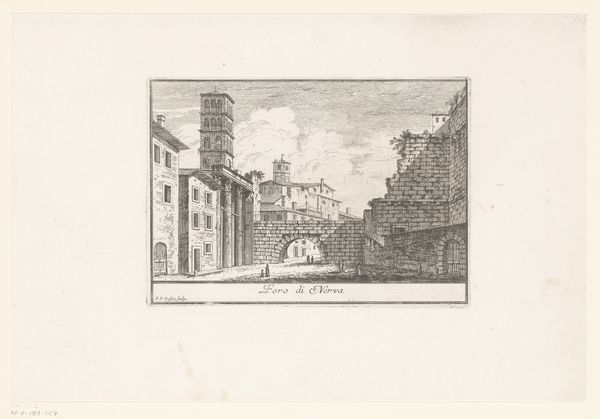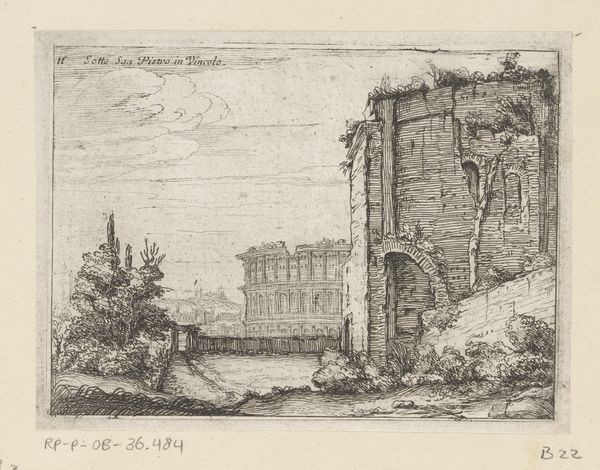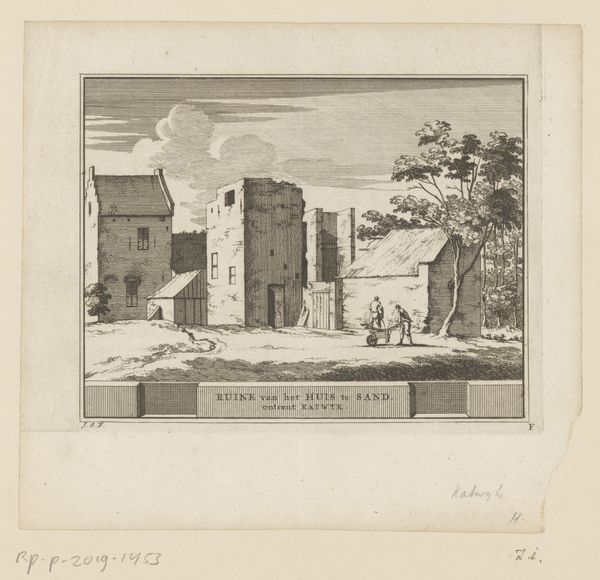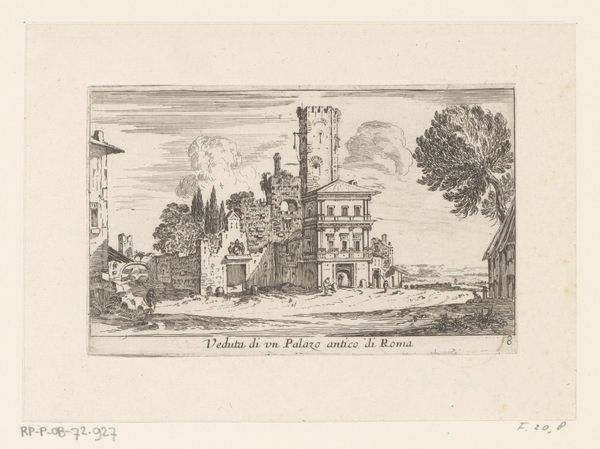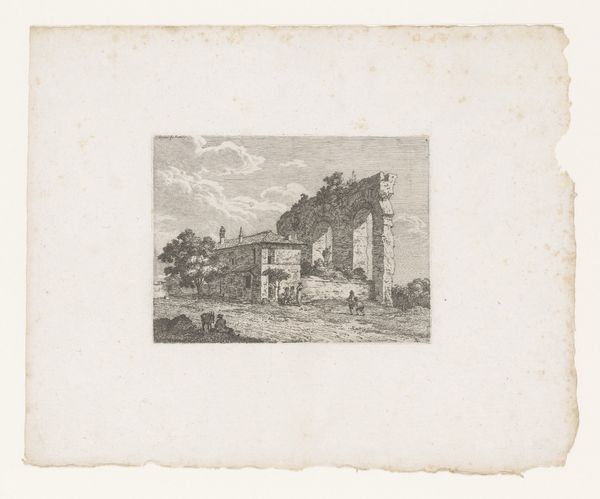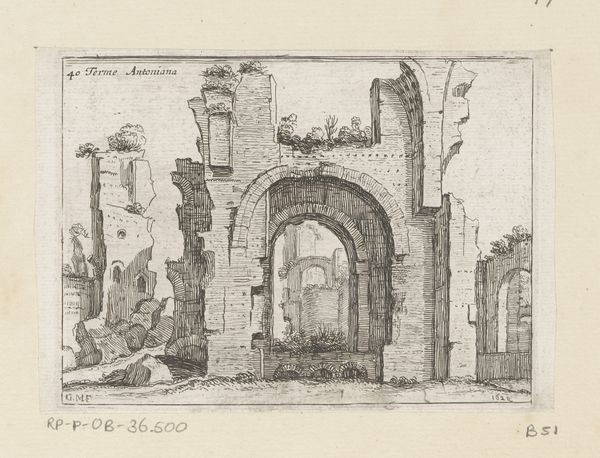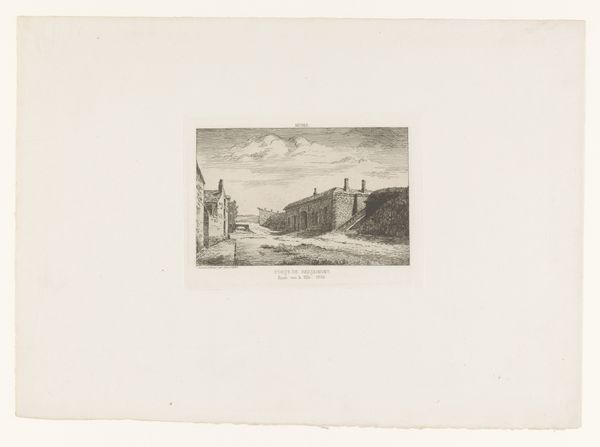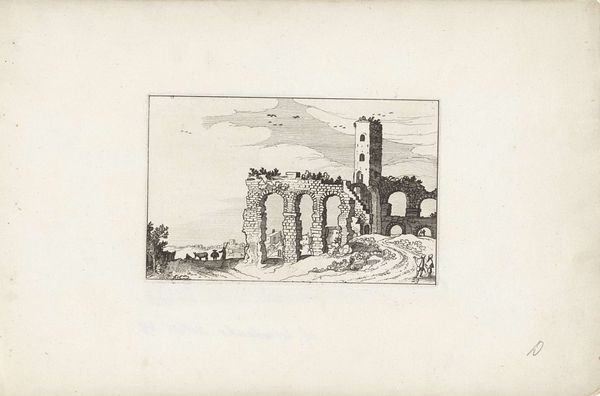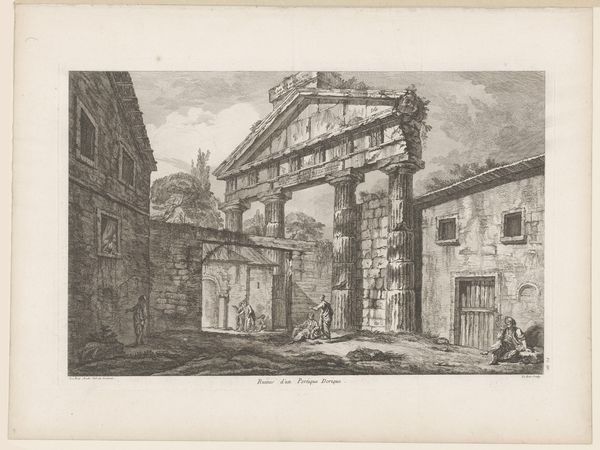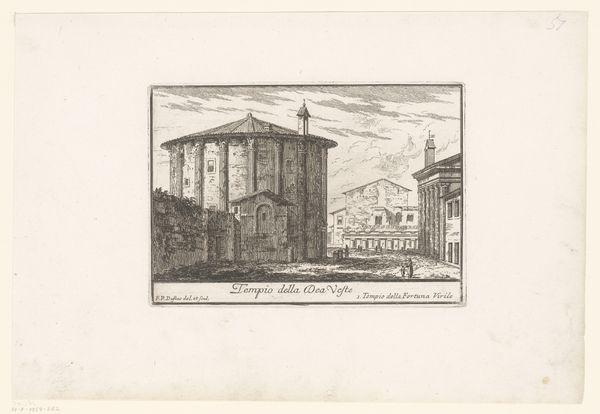
Dimensions: height 81 mm, width 109 mm
Copyright: Rijks Museum: Open Domain
Curator: Here we have Abraham Rademaker’s etching, "View of the Ruins of Spangen Castle, 1573." Although the title says 1573, the print itself dates between 1725 and 1803. Editor: The image immediately strikes me with its somber mood, almost like a memento mori. The skeletal remains of the castle reflected in the still water...it's a potent visual symbol of transience. Curator: Yes, the composition is crucial to that effect. Rademaker's meticulous lines delineate the crumbling stonework. Note how he uses contrasting light and shadow to create a sense of depth and texture. The structural integrity, or rather the lack thereof, directs our eye across the artwork. Editor: It certainly prompts reflection on the ephemeral nature of power and glory. Castles are such loaded symbols, standing for authority, defense, and legacy. Seeing it in ruins forces one to confront loss. It almost feels allegorical—a visual commentary on Dutch history and perhaps a longing for past grandeur. Curator: Perhaps, but I'm also drawn to the pure graphic qualities of the print. Consider the skillful deployment of hatching and cross-hatching to suggest the density of the stone. It demonstrates a refined understanding of the etching technique. Editor: The presence of a lone figure within the archway provides an intimate connection. Is it a reminder of the past occupants of the Castle? Also notice the lone windmill on the horizon? In Dutch art it always represents some kind of presence or absence in the landscape. Curator: True, that juxtaposition establishes an interesting dynamic. And Rademaker balances it quite effectively, maintaining visual equilibrium. Editor: Indeed, the whole thing provides an image that persists. There's almost a sense of historical narrative embedded within. It's an excellent example of how symbols of power and progress are constantly undergoing flux. Curator: Ultimately, the strength lies in the relationship between its structure, ruin and enduring appeal of Rademaker's graphic technique. Editor: Indeed, It reminds us that time's passage shapes both stone and our collective memory.
Comments
No comments
Be the first to comment and join the conversation on the ultimate creative platform.
